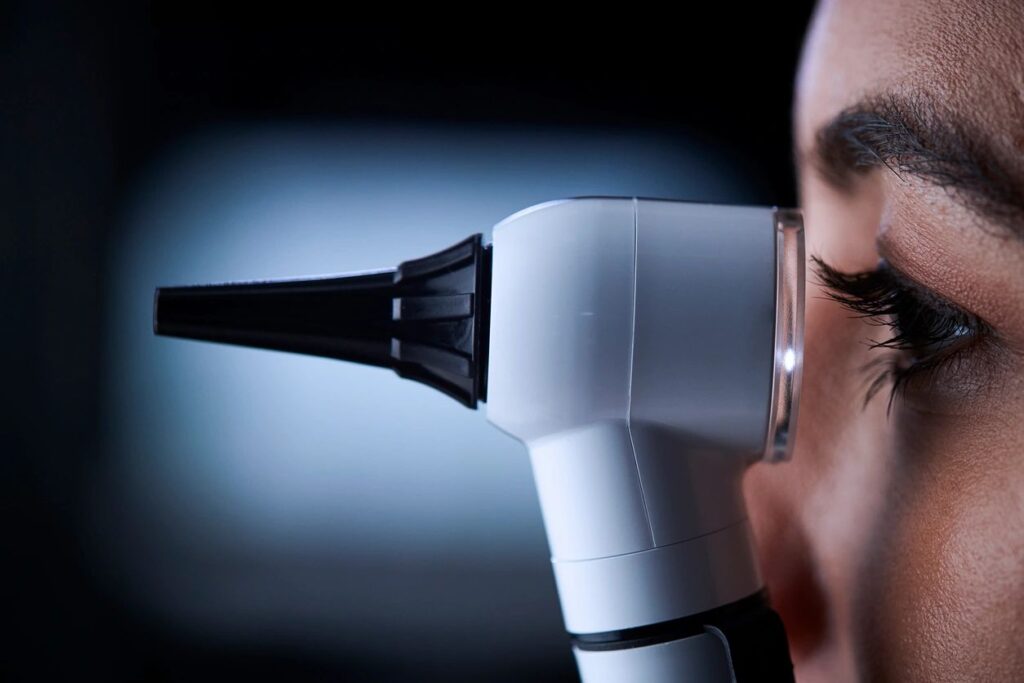Hearing loss is often associated with the aging body but the truth is that it can affect all ages and be caused by a myriad of reasons. Not sure if you or a loved one needs professional help with their hearing? Read on to learn more:

WHAT IS HEARING LOSS?
The ear is made up of three parts, the outer, the middle, and the inner ear. Sound waves enter the outer ear and travel toward the eardrum – a thin piece of skin that divides the inner and outer ear. The eardrum vibrates and sends the sound waves into the inner ear. This is assisted by three small bones called the ossicles.
There are different types of hearing loss that affect the ear in different places. The most common of these are conductive hearing loss, sensorineural hearing loss, and mixed hearing loss. It’s estimated that around 25% of people aged between 65 and 74 will experience some form of hearing loss or deterioration. This is likely caused by issues relating to the three categories.
CONDUCTIVE HEARING LOSS
One very common type of hearing loss in adults is Conductive Hearing Loss. This issue affects sound in the ear between the outer ear and the middle ear. It prevents sound traveling to the inner ear and makes it difficult to hear low, soft, or muffled sounds. This type of hearing loss isn’t always permanent and can be treated with medical intervention.
If antibiotics and surgical procedures don’t work, the next option is a cochlear implant. The cochlear is a snail shaped structure in the inner ear that translates sound waves to electrical signals to be interpreted by the brain. A cochlear implant is inserted behind the ear. It is a small electrical device that substitutes for the cochlear and creates meaningful sound.
SENSORINEURAL HEARING LOSS
A more severe and somewhat less common form of hearing loss is Sensorineural hearing loss. This type of hearing loss affects the middle ear and the inner ear. It usually distorts normal sounds and makes loud sounds quieter. This hearing loss can be acquired or congenital, in either case it is usually permanent.
There are many causes of sensorineural hearing loss. Commonly, children are born with this issue when it has a genetic origin. However, it can be acquired, especially by those who work with loud noise regularly. Severe and prolonged loud noise will damage the nerve cells of the inner ear and require a hearing aid fitting.
MIXED HEARING LOSS
The third most common types of hearing loss you or a family member may experience at some point in your life is Mixed Hearing Loss. As the name suggests mixed hearing loss is a combination of conductive hearing loss and SNHL. It can affect different parts of the ear in different ways making it more difficult to diagnose and treat.
Usually conductive hearing loss affects sound frequencies in the low range making it harder to hear soft or muffled noises. SNHL, however, affects higher range frequencies too. This makes mixed hearing loss a more severe condition that will probably require the services of an audiologist. Modern hearing aids are a good response to this issue.
HEARING LOSS SYMPTOMS
Hearing loss is progressive and you may not notice any immediate symptoms, but it’s worth looking out for them as early treatment can have better rates of success. If your hearing affects your daily life or you have a ringing in your heart that doesn’t go away, it could be the first signs of degeneration in your hearing. Have your ears checked by your audiologist.
Category: HealthTags:








